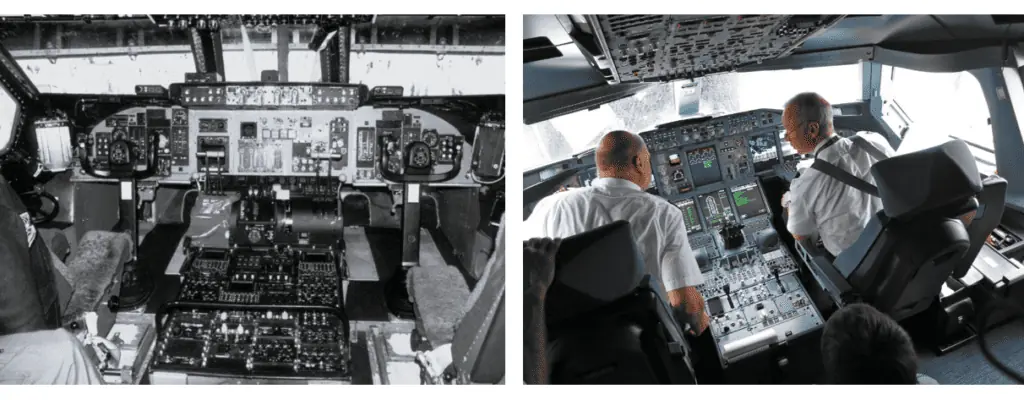
The aviation industry shifted from analog instrument panels (left) to glass cockpit.
When flight computers emerged, the aviation industry shifted from analog instrument panels to glass cockpits, changing forever the way pilots interact with airplanes’ machinery.
With the rollout of computer drivers, automakers are learning similar lessons, when they design their digital cockpits. Human factors do matter.
Questions at the upcoming aviation/vehicle autonomy web panel include: Can a car track the driver’s eye gaze? Are we overloading human drivers with information? Can a digital cockpit reduce the layers of information on display? How long does it really take for a driver to react when the car issues an emergency alert?
The recording is now available on demand. Click the button below to register first, use the passcode, #@Wy@?4k and watch the entire episode.
Speakers
- Mike Lenné, Chief Science & Innovation Officer, Seeing Machines
- Matt Gray, Former Captain, Qantas
- Bryan Reimer, Research Scientist, Massachusetts Institute of Technology, AgeLab
- Junko Yoshida, Editor-in-chief, The Ojo-Yoshida Report
- Bolaji Ojo, Managing Editor and Publisher, The Ojo-Yoshida Report
Copyright permission/reprint service of a full Ojo-Yoshida Report story is available for promotional use on your website, marketing materials and social media promotions. Please send us an email at talktous@ojoyoshidareport.com for details.
